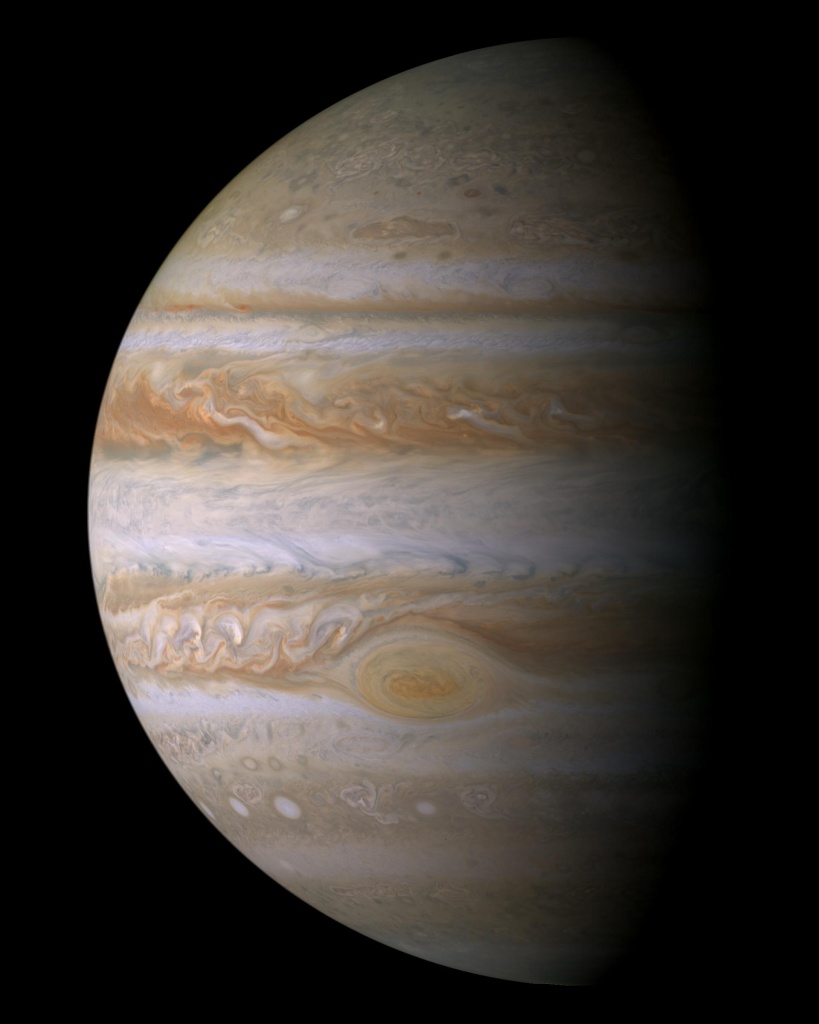Jupiter

Image courtesy Nasa
Diameter: 139822 Kilometers
Mass: 317.8 of Earths
Surface temperature: -161 degrees Celcius
Orbit around sun: 4332.59 days
Moons: 66
Jupiter was known to the ancient civilizations and was named by the Romans after the king of the roman Gods, the roman equivalent of Zeus.
Currently known to have at least 66 moons, Jupiter is one of the most visited planets in our Solar System. Nasa has sent several craft past the planet and its larger moons. The Great Red Spot seen since the year 1700 is one most sought images for astronomy. The mysticism and unknown origins has sparked many theories to its formation. Using a 12 inch telescope you can see the spot but the definition is still lacking.
Jupiter is spotted easily in the sky with the naked eye with an average apparent magnitude of -2.65 which can put it level with Venus as 3rd brightest object after the Sun and Moon.
| Jupiter in other languages:- |
| Cebuano: | jupiter |
| Chinese: | mùxīng 木星 |
| French: | jupiter |
| German: | m jupiter |
| Greek: | Δίας |
| Indonesian: | jupiter |
| Italian: | m giove |
| Japanese: | mokusei 木星 |
| Nederlands: | c jupiter |
| Norwegian: | jupiter |
| Polish: | m jowisz |
| Portuguese: | júpiter |
| Spanish: | m júpiter |
| Tagalog: | jupiter |
| Turkish: | jüpıter |